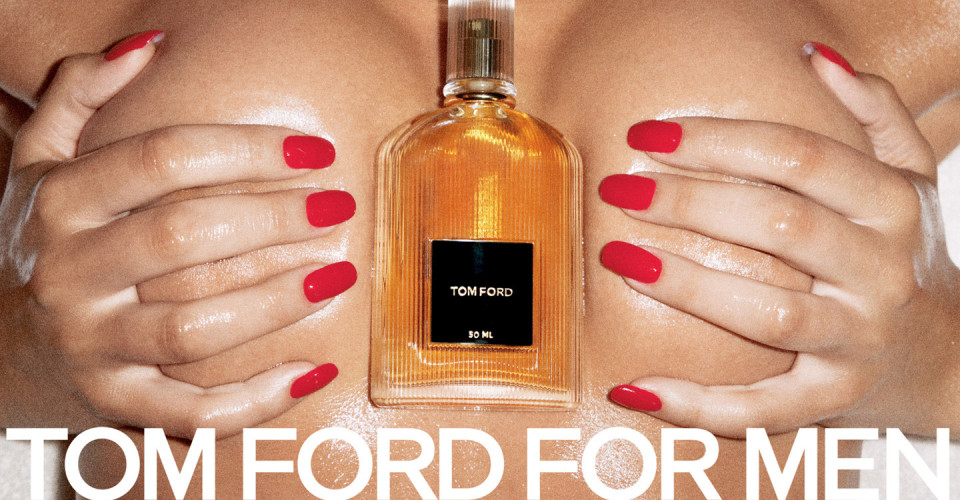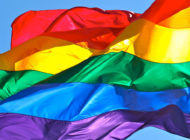Por-ni-fi-ca-tion, noun, /pɔːnɪfɪˈkeɪʃ(ə)n/
The increasing occurrence and acceptance of sexual themes and explicit imagery in popular or mainstream culture: the growing pornification of our society.
Not All Sexual Images Are Treated the Same

Last year, the Leopold Museum in Vienna held an art exhibition. Not a surprising act in itself, given that this is what museums tend to do, but the Leopold got into some serious trouble for it. This is because ads for the show, “Nude Men from 1800 to Today” featured nudity. Not female nudity, but male. The flood of complaints was unprecedented, and ended with the Museum censoring ads for the exhibition in response.
In retrospect, some of the images used by the Leopold to advertise the exhibition did shock the eye, and rightly so, the men were after all entirely nude: but why then do their female equivalents not do the same?
In almost any town in the US, UK or elsewhere the semi-nude female is on display. And they are not posed as Renaissance marbles; they are provocative, sexualized, and young. The Austrian response to a single male nude should be a timely reminder to us that not all sexual images are treated the same.
Sexual Imagery of Women is Ubiquitous
It is only when you really start to look around you that you realize how warped the portrayal of women in public spaces has become. Partly clothed, or in poses denoting their sexual availability, pornographic images of women are everywhere: from on-street advertising, to newspapers, the sides of buses and YouTube, sexualised images of women are being used to sell anything and everything.
Whether chocolate, deodorant or water, in order to sell it the default position now is to put a semi-naked women on it. Whether or not you think that partly dressed lady is relevant to fitness hydration or hair-washing (I’m thinking not) it is no longer an odd thing to see a picture of a woman lying down and having an orgasm in order to sell you the absolutely most mundane thing you could imagine, like a pair of woolen tights.
Porn Doesn’t Shock Us Because it is How We See Things
And I am shocked. Really I am. Because pictures of teenagers in see-through-nipple-showing-tops and that lingerie ad on the 205 bus are boring to me. And when I look at them again they shock me because they do not shock me.

The Guardian, and politicians such as Diane Abbott have called it the ‘pornification’ of society, and so it is. Although we may hesitate to talk about it, our private consumption of explicit imagery has brought porn into the heart of mainstream life.
From the grooming of private parts a la the Brazilian, to vajazzling, boob jobs and labia surgery, trends that began life on porn sets are now examples of how public perceptions of beauty have been shaped by a porn-influenced aesthetic.
While porn and its attendant images have made their way into public spaces, it is society’s relative blindness and compliance toward such imagery that should concern us. In some quarters thankfully, people are starting to notice. In the US for example, the Hawkeye Initiative has drawn attention to the issue with humour and grace. By reimagining well known images of female comic book characters as the male super hero Hawkeye, members of the public have been able to highlight the casual, often ridiculous, way in which female have been depicted for public consumption.
In the UK too, last year saw the launch of the No More Page 3 campaign, a movement aiming to bring an end to the use of topless models on the pages of the UK newspaper, the Sun. At the same time, the Everyday Sexism project in Britain is doing much to highlight the daily objectification of women in public places.
Pornification is Shaping Attitudes in Young People
Despite these gains, as a society we still need to acknowledge a well-known truth: porn is no longer the stuff dads hide under the bed.
It is everywhere, even if we won’t talk about it, and it is being accessed by the increasingly young. Because of the ease with which porn can be found, Australian research now indicates that the average age at which children first watch it is 11 years old.
Although not all porn is bad, a lot of it really isn’t good. Whilst some of it is generic and repetitive, guilty of perpetuating myths about sexuality and pleasure, some of it is extreme and degrading. At its worst, porn has been known to warp some people’s ability to be with a partner in the real world. But these are just the effects porn has been known to have on adults, people who are already sexually experienced and who grew up out of the gaze of new media.
What then for children growing up now? At a time where standards in sex education are falling and funding for schools being cut, what effect is this wash of imagery having on the attitudes of young people with no prior knowledge and no experience to draw on to help them negotiate this mire? While sex has never been so out in the public eye, our prudish approach to talking about it in schools, public spaces and with our children is having harmful and lasting effects on young people.
The Internet: an Accelerator
The learning ground for children is now the internet and via social media, and it is these communicative technologies that have accelerated the rate at which the objectification of women and girls is happening. Indeed, Apps such as Snapchat, BB messaging and Youtube are helping to fuel the creation, sharing, ranking and display of explicit images amongst children, even at primary school level.
Last year, an NSPCC report found that the majority of sexting reported by 11 and 12 years olds was made under coercion from peers.
In many ways, the pace of our inventiveness with new technology has outstripped our ability to handle it thoughtfully. It has led to a position where young people are under an unprecedented amount of pressure to conform to hyper-sexualised ideas of how the sexes should behave. But while teaching unions have warned that children as young as 9 have been asked to perform sexual acts on their friends in the playground, there is still something of a culture of silence around the discussion of sex with young people.
Where to now?
Sadly, porn is not a truthful depiction of the erotic. It is also, infamously, not well geared towards female desires. In making sexual imagery so ubiquitous I fear we have taken something away from sex.
My issue with much of the pornified imagery and media surrounding us now is its sameness. In sharing and spreading globalised norms of beauty and behaviour, much consumer driven sexual imagery is now fairly banal. In moving towards this homogeneity of appearance and behaviour we have robbed sex and sensuality of something of its specialness. At the heart of it I fear the ever presence of such images, coupled with our reluctance to talk about sex is bequeathing on a generation of young people more transactional attitudes towards the sharing of bodies, coupled with more insecurity as to how they should look and behave.
Whether internet porn or perfume ad, some of the images we are exposed to are at times too explicit, too immediate, and too easy. Porn is not an unmitigated evil, but it has taken something of the subtly and wonder out of some of our most intimate acts.
And if all we know of sex is what we are shown on billboards and porn sites than we will be a poorer society indeed.
—
By Stephanie
Tags: advertising gender Pornography sex



























4 Comments
I think this stems from a broader issue at large that comes with the ever growing use of social media and networking: the over saturation of Content in society. Anyone can find anything anywhere and find it presented with more edge or wit or quip than you might have imagined. There is such a plethora of information: fact, fiction and otherwise that’s immediately available, that a topic as powerful and mysterious as sex is of course treated with a heavy hand.
One interesting dynamic that attributes to the light we come to view sex in is the duality of Suppression and Over Indulgence. In the small suburb of Colorado i grew up in, most of our baser, darker impulses: not the least of which includes curiosity about sex, were considered taboo to the point of being outlawed. We were taught to ignore and stifle such curiosities until a vague, pretentious time would come that we would finally be gifted with that perfect perspective of all these things, gifted to us for our years of penance. I may be mildly exaggerating, but I don’t think I’m alone in having been brought up in such a way. I may be in one of the final generations to have been subjected to this general repression of ideas and exploration and now as the current generation of young adults, we are savoring this over saturated free-for-all of sex, violence, drugs, and easy fixes that we’ve created. The more vulgar and fantastical the representation of those things, the more they seem to fit in that vision of a forbidden fruit that we were raised with.
I hope that by that logic, our current obsession and simultaneous shame regarding sex is something of a “generational phase”. That, given time and introspection, we will understand and recompense for the shortcomings of our upbringing and create a legacy for coming generations of personal exploration, of shared experience and empowerment of one’s own liberty to find their own truth regarding these “darker” facets of our psychology. Given that, i would safely assume that such extreme aesthetics would fade over time. That the shock value would decrease while our sentimentality towards these subjects enriches
A young teen today may be unaware (cognitively) of the onslaught of sexual explicit images and innuendos they are bombarded with in the media all in the name of selling more products and services. With the explosion of digital media, this has become even a bigger problem.
Children today can innocently stumble across websites that portray sexually explicit material, and research shows young children and teens are more likely to have sex after being exposed to sexual content in the media. The reasons associated are not surprising; this exposure acts as a quasi sex education class where sex is portrayed as a casual experience and consequence-free. (Carolyn Ross, 2013)
Charles Ess makes it clear in his book, Digital Media Ethics, that digital sex and its opportunities are everywhere, including video games. Regulation of the material varies from country to country, and the Internet of course is hard to regulate. One positive aspect is that individuals and countries agree in regards to child pornography, although always debated as with all things sexual. (Ess, 2009, p. 138)
This bombardment of sexually explicit material and the effects on our children and society as a whole has been coming to the forefront of many discussions for quite some time now, and especially since the Internet explosion. In an Internet article by The Boston Globe, The Pornification of America, I found an encouraging quote by Pamela Paul, author of ”Pornified”,
”Our culture once glamorized cigarette smoking to a large extent. It was promoted by the medical establishment, the film industry, TV,” she says. ”But once the evidence of harm began to be disseminated by the government, and by schools and the private sector, the number of people who started smoking went down. My hope is that once people realize the negative effect that pornography has on individuals, their children, their wives, and society as a whole, there will be a mind-set shift.”
I hope this time comes soon than later, I’m still waiting…
REFERENCES:
Aucoin, D. (2006, January 26). The pornification of America. Retrieved July 11, 2014,
from The Boston Globe: http://www.boston.com/yourlife/articles/2006/01/24/the_pornification_of_america/?page=full
Carolyn Ross, M. M. (2013, August 13th). Psychology Today. Retrieved July 11, 2014,
from Overexposed and Under-Prepared: The Effects of Early Exposure to Sexual Content: http://www.psychologytoday.com/blog/real-healing/201208/overexposed-and-under-prepared-the-effects-early-exposure-sexual-content
Johannesen, R. L., Valde, K. S., & Whedbee, K. E. (2008). Ethics in Human
Communication (6th ed.). Long Grove, IL, USA: Waveland.
I really enjoyed reading this article. I would first like to say that I, for one, am confused how showing naked pictures, paintings, posters, images, etc. of women seems to be more accepted and reasonable than it is to show these same images of men. It is, after all, the very same message, but some people seem to think it is unacceptable to show men in this way, while society only objectifies women in this way.
Why is it that companies, advertising agencies, etc. feel that placing a naked woman on their ad will promote their product? Why do we as a society allow for these things to happen. I feel that we could be doing so much more as a society to diminish these sorts of ads.
I like how the author identified the internet as an accelerator. The next generation lives, sleeps, breathes through the internet. We can not control what is generated on the websites they visit. We cannot control what websites they visit. Apps like Snapchat and Tinder make it easy for minors to do things like send naked pictures or meet someone with the wrong intentions. When we have ads for cheeseburgers promoting a sexual image, we are telling these kids and/or minors that it is okay to take a sexual approach to everyday, mundane things. We are downplaying the importance of sex and the significance it can have on their lives.
All of this and many more things profoundly complicates the ethical issues surround the pornification of society. The internet and social media have promoted sex and sexual behaviors/mindsets so much so, that it is going to eventually blur the lines in defining pornography. Digital media and modern advertising is so diffused throughout contemporary societies that it has become the norm, or as David Amsden would say, the wallpaper of our lives.
I really enjoyed reading this article. I would first like to say that I, for one, am confused how showing naked pictures, paintings, posters, images, etc. of women seems to be more accepted and reasonable than it is to show these same images of men. It is, after all, the very same message, but some people seem to think it is unacceptable to show men in this way, while society only objectifies women in this way.
Why is it that companies, advertising agencies, etc. feel that placing a naked woman on their ad will promote their product? Why do we as a society allow for these things to happen. I feel that we could be doing so much more as a society to diminish these sorts of ads.
I like how the author identified the internet as an accelerator. The next generation lives, sleeps, breathes through the internet. We can not control what is generated on the websites they visit. We cannot control what websites they visit. Apps like Snapchat and Tinder make it easy for minors to do things like send naked pictures or meet someone with the wrong intentions. When we have ads for cheeseburgers promoting a sexual image, we are telling these kids and/or minors that it is okay to take a sexual approach to everyday, mundane things. We are downplaying the importance of sex and the significance it can have on their lives.
All of this and many more things profoundly complicates the ethical issues surround the pornification of society. The internet and social media have promoted sex and sexual behaviors/mindsets so much so, that it is going to eventually blur the lines in defining pornography. Digital media and modern advertising is so diffused throughout contemporary societies that it has become the norm, or as David Amsden would say, the wallpaper of our lives. (Ethics in Human Communication).
Johannesen, R., Valde, K., & Whedbee, K. (2008). Ethics in Human Communication (6th ed). Long Grove, IL: Waveland Press, Inc